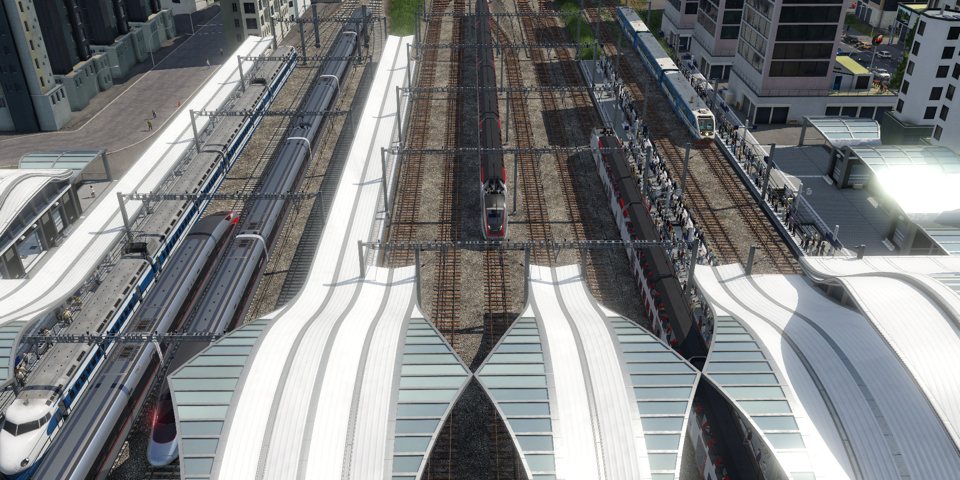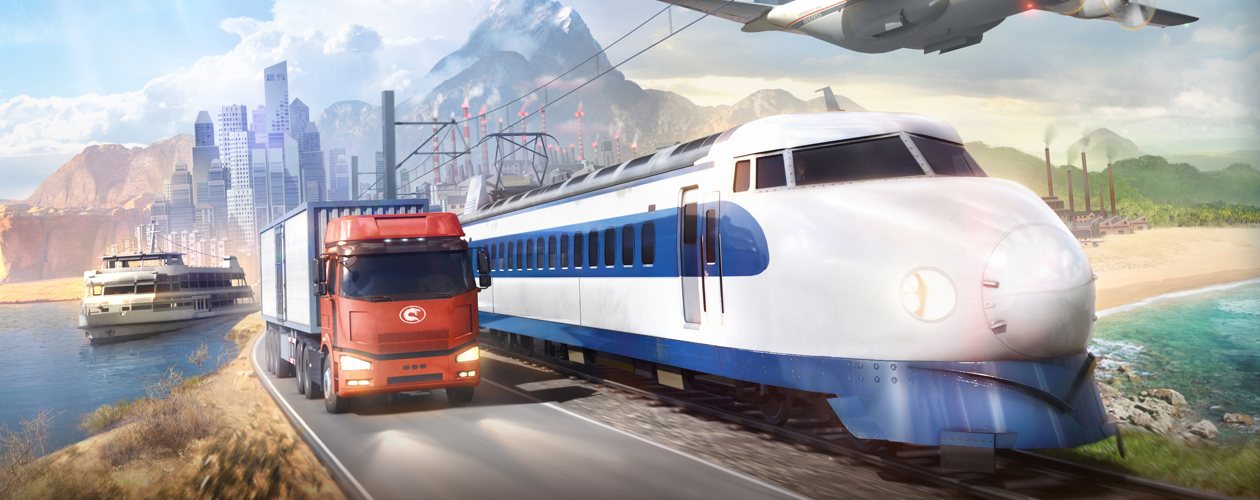In a parallel dimension, Transport Fever might be a Japanese Visual Novel where anime characters get a little hot under the collar at the sight of a sleek looking bus or train. With Swiss developer Urban Games at the helm, however, the series has instead taken the slightly more logical route of casting you as a transport tycoon.
The key thing to know about Transport Fever 2 is that it’s a case of evolution, not revolution. With Urban Games able to come at this with a much bigger budget, they’re able to work with a lot of the same ideas, but refine them and take them further than before. The most obvious area where this is the case is with the game’s graphics, which have been overhauled with new lighting, more detail, grass, animals, and so much more. A whole new tropical biome and a set of Asian vehicles will also help spice up the screenshots. It can look really, really good in places, but dig beneath the surface and there’s been tons of changes behind the scenes as well.
For the first time player, Urban Games have revamped their attempts to teach people how to play with more in depth tutorials built into the first few missions of the story campaigns. It starts in the Old West, as you’re looking to make the most of a new influx of cash from a successful gold mine. A quick cargo route later with horse and cart, and you’ll be turning your attention to building a rail connection to the nearby town, and go from there.

I can see what Urban Games are trying to do here, and I have to make exceptions for this being an alpha build of the game, but the tutorial is unrefined in its design. As each instruction pops up, such as to build a road vehicle depot, you’re not directed where to find it until a few moments of not clicking in the right area, at which point additional tips and UI highlights come into play. It gets the job done, on the whole, but there’s still some refining to do. A lot of what Urban Games want to pull off will hopefully come together with an overhauled UI, which this build did not feature.
Still, it’s relatively easy to get to grips with. Whether it’s a procedurally generated map or one of the missions, you have to connect up the towns for passengers, each with residential, business and industrial districts, while also connecting the dots between all of the mines and factories across the map. You can start this all the way back in the 1850s, with just horse and cart, or pick any decade up to the modern day in the sandbox mode and start with some more modern forms of transportation.
One big new feature for Free Play is a map editor. Previously you simply had a few parameters to choose from, a random seed that you could feed into the generator and then wait a minute or two while the game cooks up the map. If you didn’t like it, you’d have to go back and have another stab in the dark to get something you’d want to play on. Now you can get a near live mini-map preview of the world, there’s a lot more sliders to push back and forth, and then you can hop in with a straightforward set of terrain manipulation tools to customise it from there. Embracing the modding community once more, there’s Steam Workshop support to share maps and saves (which can also be customised in the map editor).

Another area that Urban Games have worked to improve is just with the underlying mechanics. The intention is that it should make more sense how you can improve your network and feed a particular factory with what it needs to produce the goods that can make the towns grow – we only had a relatively short amount of time to go hands on with the game, but more clarity will never go amiss. You’ll also have to now take regular road traffic into account, as the cars of ordinary people and the speed of the general road network can feed or hamper a town’s expansion. Part of that could be making a hellish one way system stuffed with traffic lights.
I think possibly my favourite new feature, though, is the new modular station and building system. Starting with a simple train station, you can fully customise the layout with extra tracks, platforms and buildings simply bolting onto it on any side. You can combine through platforms and end platforms, and throw a couple of cargo platforms on there for good measure. It’s true for other methods of transport and building types as well, adding a controversial second runway over the objections of residents. Oh, that’s actually a thing in Transport Fever 2 (kind of), as noise and pollution are tracked in real time and can feed into how a town grows, stagnates and even shrinks.

Though it’s marked as an evolution of the last Transport Fever, Urban Games might be underselling what this sequel will offer. Sure, a lot of what they’re changing in the core gameplay is based off player feedback and revising some of the existing systems to be clearer, but there’s some major features in the map editor and additions to the core gameplay as well. Even the visual and thematic upgrades alone are a big step forward. If you’re a fan of the previous games or Transport Tycoon games in general, make sure to check the timetables for when this departs for PC later this year.



